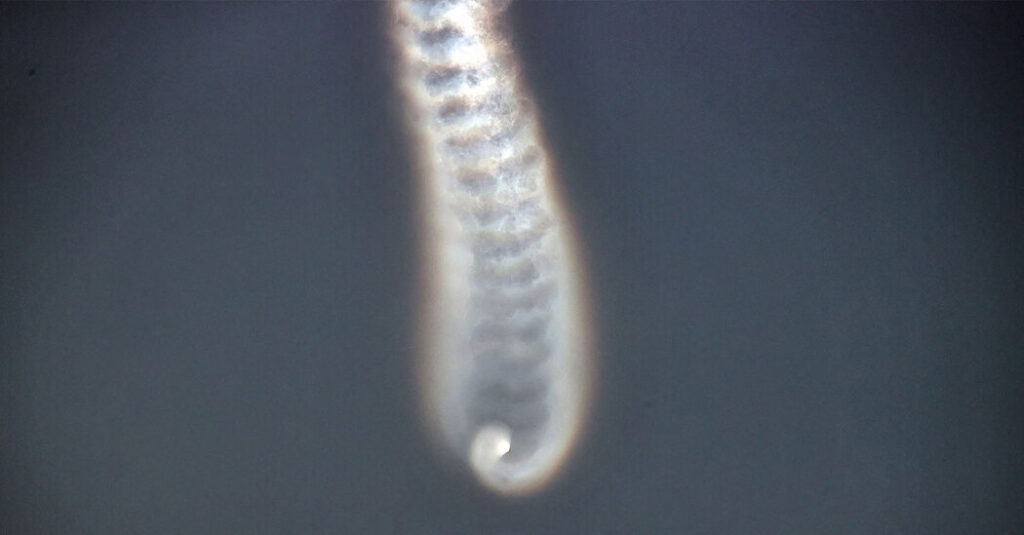North Korea said Thursday it had tested technology to launch multiple nuclear warheads on a single missile for the first time, days after Russian President Vladimir V. Putin visited the country and raised the possibility of expanding military and technological cooperation.
North Korea’s state-run Korean Central News Agency reported that Wednesday’s test was “aimed at ensuring MIRV capability.” MIRV stands for “multiple independently targetable reentry vehicle,” a missile that can carry multiple warheads and send each one to a different target. The report said the test was part of a MIRV system, not a full-fledged multiple-warhead missile.
Since North Korean leader Kim Jong Un invited Putin to meet last week, officials and analysts have expressed concern that deepening ties between the two countries could encourage Kim to embark on an ambitious nuclear buildup.
A multiple-fragmentation capability would greatly increase the threat North Korea poses to the United States and its allies because a high-speed ballistic missile could split into multiple warheads or decoys, making it harder for missile defense systems to intercept it, but experts believe North Korea is a long way from mastering the technology.
South Korean military spokesman Colonel Lee Song-jun said Thursday that North Korea’s announcement was full of “deception and exaggeration.” He gave no details but said photos of the test carried by state media may have been altered. South Korean officials denied Wednesday’s test was a failure shortly after it was carried out and said the missile exploded over the sea east of North Korea after traveling 150 miles. They said the test appeared to have involved a hypersonic ballistic missile.
Multiple U.N. Security Council resolutions prohibit North Korea from developing or testing nuclear weapons or ballistic missile technology, but Kim has focused on expanding those capabilities since 2019, when direct diplomacy with then-President Donald J. Trump broke down.
Kim has found a new ally in Putin since the Russian leader ordered an all-out invasion of Ukraine in 2022. The United States and its allies have accused North Korea of shipping large amounts of artillery shells and other munitions to help Russia fight its war of attrition.
During a visit to Pyongyang last week, Putin signed a Treaty on Comprehensive Strategic Partnership with Kim, which includes a joint commitment to “provide military and other assistance without delay, with all the means at hand” if either country comes under attack.
The treaty also calls for “joint measures aimed at strengthening defense capabilities,” raising concerns among the United States and its allies that Russia may help North Korea develop its missile program. Putin said in Pyongyang that Russia “does not exclude the development of military-technical cooperation” with North Korea.
Multiple warhead nuclear missiles have long been on Kim Jong Un’s wish list, but while North Korea has conducted several successful nuclear tests, experts say it has yet to demonstrate the ability to design even a single warhead capable of surviving ballistic missile re-entry and threatening distant adversaries such as the United States.
North Korea’s nuclear arsenal is particularly reliant on missiles as a means of delivery because it lacks the advanced fighter jets or submarines to launch them. North Korea has built solid-fuel missiles that are easier to move and hide from enemies, and it has also tested hypersonic missile technology, though South Korean officials say it is years away from achieving real success in that area.
North Korea’s Missile Administration said in Wednesday’s test that it “successfully tested the separation and guidance control of individual mobile warheads.” It said engineers used the first-stage engine of a medium-range solid-fuel ballistic missile and conducted the test in a relatively small area, ensuring safety and allowing them to more precisely measure the flight characteristics of each individual warhead.
“The detached mobile warhead was precisely guided to the three coordinate targets,” the report said, but added that the effectiveness of “decoys,” fake warheads designed to confuse defense systems, needed to be further improved.
The United States and South Korea are expanding their joint defense posture with Japan, citing growing threats from North Korea and China. Over the weekend, a group of U.S. nuclear-powered aircraft carriers arrived in South Korea for a three-way exercise that also included Japan. On Wednesday, South Korea conducted live-fire and rocket-launch drills on islands near its West Sea border with North Korea.
